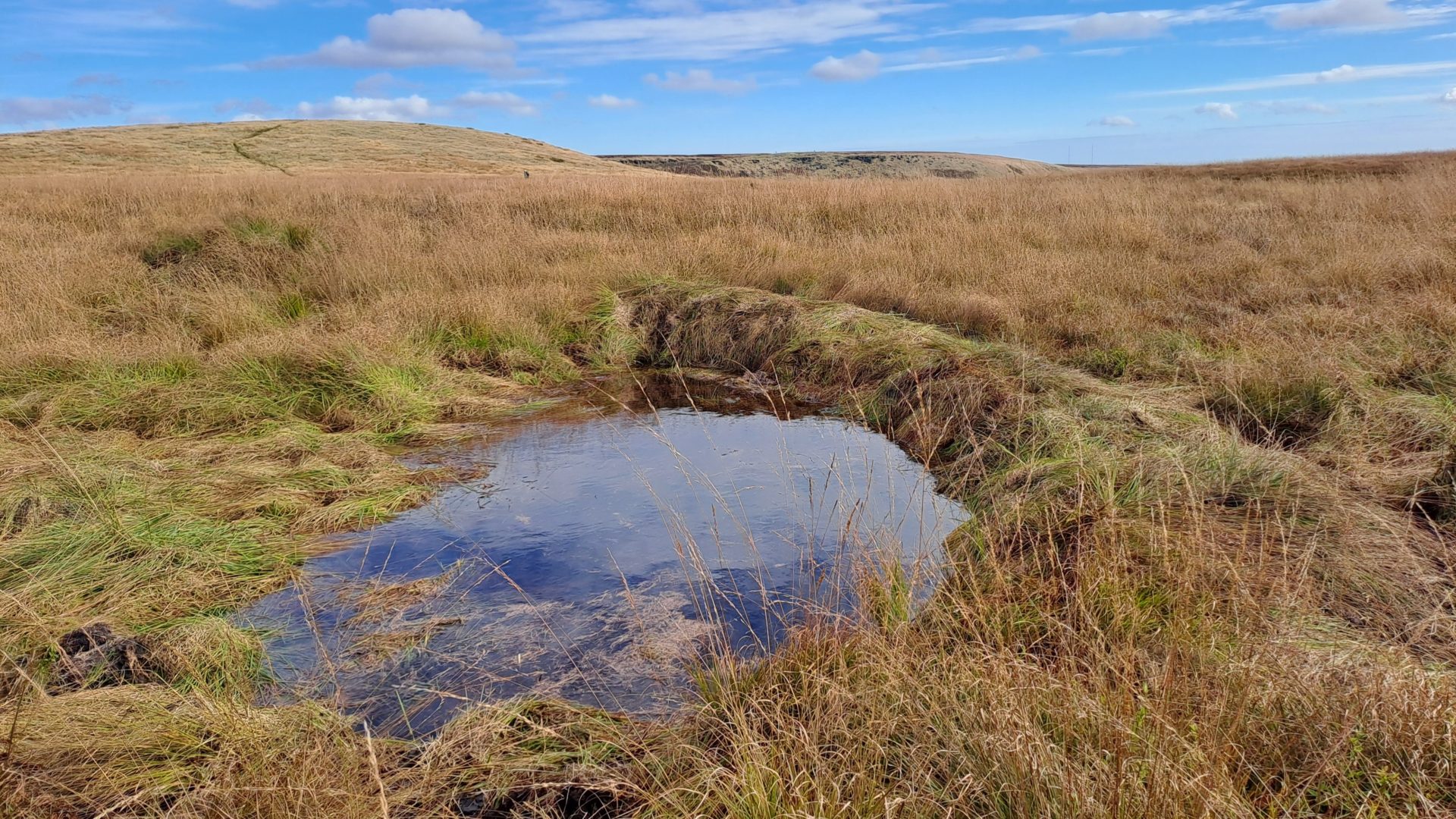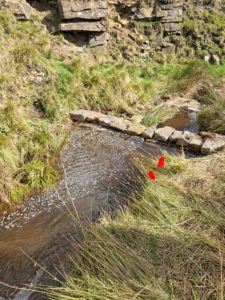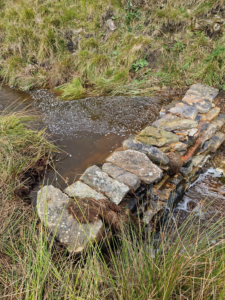As we move into another winter in the UK, after one of the wettest summers on record, many people will be worrying about the impact that more rain will have, and about the risk of serious flooding.
Meanwhile, up near Baitings Reservoir in West Yorkshire, contractors can be found standing in ditches, stacking stones to make what look like dry stone walls with a gap in them.
These facts might seem unrelated, but in fact, these new ‘walls’ are a form of Natural Flood Management, known as leaky dams. By partially blocking the flow of water through moorland ditches or channels, they act to slow the flow of rainwaters during heavy rainfall.
By gradually releasing water slowly over a longer period, instead of allowing it to rush downhill, they can help to limit flooding downstream, saving homes and businesses from damage.
Excessive pollution, grazing and draining of moors within the South Pennines over the past few centuries has dramatically changed their topography, drying them out, eroding soils and raising the water table. This means they lose the ability to hold water and store carbon, leading to an increased risk of both flooding and moorland fires.
But by rewetting the moors and keeping water up on them for longer, it’s now thought that flood events will have less of a dramatic effect impact down in the valleys.
Natural Flood Management (NFM) measures like these are becoming more widespread, particularly in northern England where there has been a climate-related increase in annual rainfall and named storm events. In Pickering, where NFM leaky dams were installed a decade ago, they have been shown to reduce water levels in peak events by around 25%.
The Landscapes for Water project is installing 3,500 leaky dams across five main areas of the South Pennines over the next four years. Landscapes for Water is a joint programme between the National Trust and Yorkshire Water that aims to restore upland landscapes across the two organisations’ landholdings in the South Pennines, specifically in the Upper Calder and Colne catchments.
In early October, contractors arrived at the Yorkshire Water moorland landholding around Baitings and Ryburn reservoirs and began stacking up stones to form leaky barriers. The gaps in them are strategic, allowing the normal flow of water and wildlife to pass through unimpeded.
At Marsden Moor, diggers arrived to build similar dam structures out of turf, which remould the topography, creating ephemeral pools along the channels and gullies, which will gradually fill up with rainfall, providing habitat and hydration for wildlife, as well as slowing the flow.
Willow dams will also be added, as the project progresses, made using bunches of willow twigs and stakes to create living wooden structures in the channels, similar to those made by beavers.
Landscapes for Water Project Lead, Jess Yorke, said:
“Natural flood management methods like leaky dams have been shown to significantly slow the flow and make a real difference to the amount of storm water that descends from the uplands into the valleys. Our dams will be installed across our project areas from Todmordon in the north to Marsden in the south, where they can make a difference to many towns and villages downstream.”
Carol Prenton, lead surveyor at Yorkshire Water said:
“It’s key to integrate flood resilience into our wider land management strategy, and we’re pleased to have started installation of the leaky dams as part of the Landscapes for Water partnership. Alongside managing the flow of water, the dams can provide a home for wildlife and help our moorlands to thrive.”
West Yorkshire Mayor Tracy Brabin, who has provided funding for the Landscapes for Water’s NFM, says:
“As climate change worsens, and one-in-a-hundred-year floods become more common, it’s vital that we build a greener, more secure region that’s fit for the future. We want West Yorkshire to be more resilient to flooding so we can avoid a terrible repeat of the devastating 2015 Boxing Day floods.”
In addition to the dams, Landscapes for Water will be planting 350 hectares of native woodland (around 300,000 trees) across the South Pennines. So far 72,000 out of 300,000 species such as oak, rowan, birch and hawthorn have been planted.
These trees will also reduce flood risk, as canopies intercept rainfall directly, reducing the amount of water that reaches the ground, and root systems promote higher soil infiltration rates, allowing water to be absorbed into the ground more quickly.
The tree planting is supported and funded by the White Rose Forest, the Community Forest for North and West Yorkshire, via their Trees for Climate programme, part of Defra’s Nature for Climate fund. It will also contribute to the delivery of wider Northern Forest, that stretches from Liverpool to Hull.





